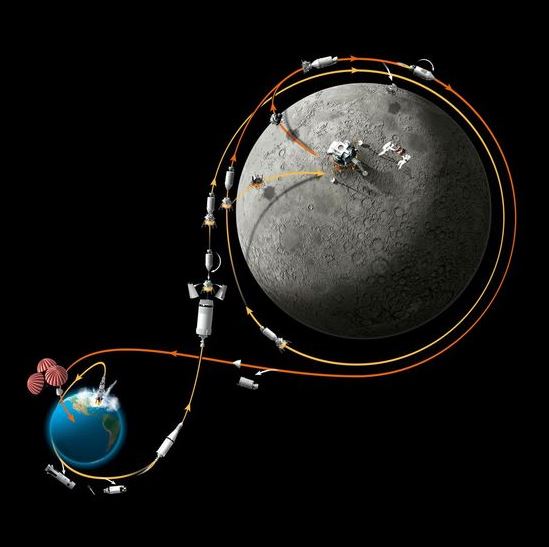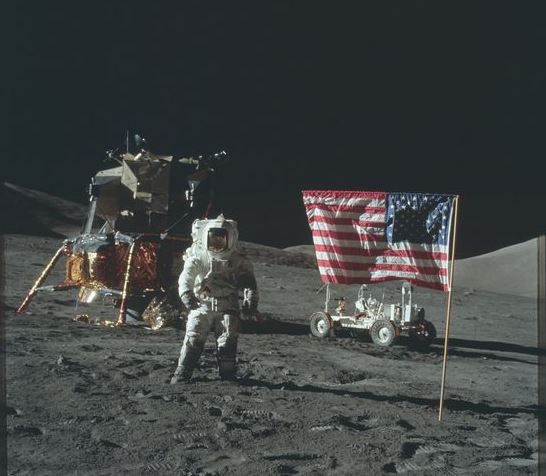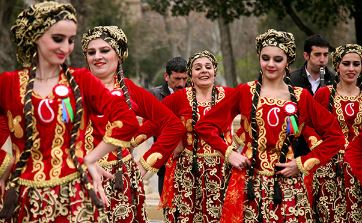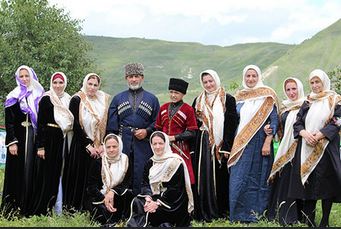The Apollo Program was a series of space missions conducted by NASA between 1961 and 1972, with the primary goal of landing humans on the Moon and safely returning them to Earth. It stands as one of the greatest achievements in human history, marking the first time humans set foot on another celestial body. The program played a pivotal role in space exploration, technological innovation, and scientific discovery.
This article explores the origins, objectives, key missions, and legacy of the Apollo Program, which remains a symbol of human ambition and perseverance.
Origins and Objectives of the Apollo Program
The Apollo Program was launched in response to the Space Race between the United States and the Soviet Union during the Cold War. The competition to achieve supremacy in space exploration began with the Soviet Union’s launch of Sputnik 1 in 1957, followed by Yuri Gagarin’s historic first human spaceflight in 1961.
In response to these Soviet achievements, U.S. President John F. Kennedy famously challenged the nation to land a man on the Moon before the end of the 1960s. In his speech on May 25, 1961, Kennedy said, “We choose to go to the Moon in this decade and do the other things, not because they are easy, but because they are hard.” This bold statement became the guiding vision for the Apollo Program.
The primary objectives of the Apollo Program were:
- Landing humans on the Moon and safely returning them to Earth.
- Establishing the United States’ leadership in space exploration during the Cold War.
- Advancing scientific knowledge about the Moon and space.
- Developing and refining space technologies, including spacecraft design, navigation, and life support systems.

Key Milestones and Missions
The Apollo Program consisted of several uncrewed and crewed missions designed to test spacecraft, train astronauts, and perfect the technology needed for a successful Moon landing. Some of the key missions include:
Apollo 1 (AS-204)
Apollo 1 was intended to be the first crewed mission of the program. Tragically, on January 27, 1967, a cabin fire during a launch rehearsal killed all three astronauts—Gus Grissom, Ed White, and Roger B. Chaffee. This devastating accident led to a comprehensive review of the spacecraft’s design and safety protocols, resulting in major improvements to both the spacecraft and mission procedures.
Apollo 7
Launched on October 11, 1968, Apollo 7 was the first successful crewed mission after the Apollo 1 disaster. It tested the redesigned Command and Service Module (CSM) in Earth orbit, proving its capability for future lunar missions.
Apollo 8
Apollo 8 was launched on December 21, 1968, and was the first human mission to leave Earth’s orbit, reach the Moon, and orbit it. The crew, consisting of Frank Borman, James Lovell, and William Anders, became the first humans to witness the Earthrise from the Moon, providing iconic images that underscored the fragility of our planet.
Apollo 11: The First Moon Landing
The most famous mission in the Apollo Program, Apollo 11, was launched on July 16, 1969. It carried astronauts Neil Armstrong, Buzz Aldrin, and Michael Collins on a historic journey to the Moon. On July 20, 1969, Neil Armstrong became the first human to set foot on the lunar surface, uttering the now-legendary words, “That’s one small step for [a] man, one giant leap for mankind.”
Armstrong and Aldrin spent approximately 2.5 hours walking on the Moon, collecting samples, conducting experiments, and planting the U.S. flag. Meanwhile, Collins remained in orbit aboard the Command Module. The mission successfully achieved its goal of landing humans on the Moon and returning them safely to Earth.
Apollo 12
Launched on November 14, 1969, Apollo 12 was the second mission to land on the Moon. Astronauts Pete Conrad and Alan Bean successfully performed lunar surface activities, while Richard Gordon piloted the Command Module in lunar orbit. The mission demonstrated that NASA could replicate the success of Apollo 11 and continue to refine lunar exploration techniques.
Apollo 13: The “Successful Failure”
Apollo 13, launched on April 11, 1970, was meant to be the third mission to land on the Moon, but an in-flight explosion in one of the spacecraft’s oxygen tanks forced the crew to abort the lunar landing. Astronauts James Lovell, Fred Haise, and Jack Swigert faced life-threatening conditions but managed to return to Earth safely thanks to the ingenuity of the crew and ground control. The mission was termed a “successful failure” due to its successful recovery despite the crisis.
Apollo 15, 16, and 17: Scientific Exploration
The final three Apollo missions—Apollo 15 (1971), Apollo 16 (1972), and Apollo 17 (1972)—focused on more extensive scientific exploration of the Moon. These missions included the use of the Lunar Roving Vehicle (LRV), allowing astronauts to travel greater distances on the lunar surface and conduct more complex scientific experiments.
- Apollo 17 was the last mission of the program, launched on December 7, 1972. Astronaut Harrison Schmitt, a trained geologist, became the first scientist to walk on the Moon, underscoring the program’s shift towards scientific exploration in its later stages.
Achievements and Legacy of the Apollo Program
The Apollo Program had a profound impact on space exploration, science, and technology. Some of its key achievements and legacies include:
Technological Innovation
The Apollo Program drove the development of numerous technologies that are still in use today. The advances in computing, materials science, and communications that were made to support the program had a lasting impact on industries beyond space exploration.
- The Apollo Guidance Computer (AGC), which helped astronauts navigate to the Moon, was an early example of digital computing and miniaturization, foreshadowing modern computing systems.
Scientific Discoveries
The Apollo missions brought back 842 pounds (382 kilograms) of lunar rock and soil samples, which continue to be studied by scientists around the world. These samples have provided valuable insights into the Moon’s geological history, helping to refine theories about the origin of the Moon and the early solar system.
Space Diplomacy
The Apollo Program also had significant geopolitical implications. The success of the Moon landings demonstrated U.S. technological superiority during the Cold War and helped cement NASA’s reputation as a world leader in space exploration. The famous Apollo-Soyuz Test Project in 1975, which saw American and Soviet spacecraft dock in orbit, signaled the beginning of international cooperation in space.
Human Legacy
The Apollo Program inspired generations of scientists, engineers, and space enthusiasts. It demonstrated the power of human ingenuity, teamwork, and determination to achieve seemingly impossible goals. Neil Armstrong’s first steps on the Moon remain one of the most iconic moments in human history.
The Apollo Program was a monumental achievement in human history that showcased the United States’ leadership in space exploration and technological innovation. From the early tragedies of Apollo 1 to the triumphant landings of Apollo 11 and beyond, the program marked a period of unprecedented scientific discovery and progress.
The program’s influence continues to resonate in modern space exploration efforts, as NASA, private companies, and other space agencies aim to return to the Moon and explore Mars. The Apollo Program remains a testament to human curiosity, perseverance, and the desire to explore the unknown.






